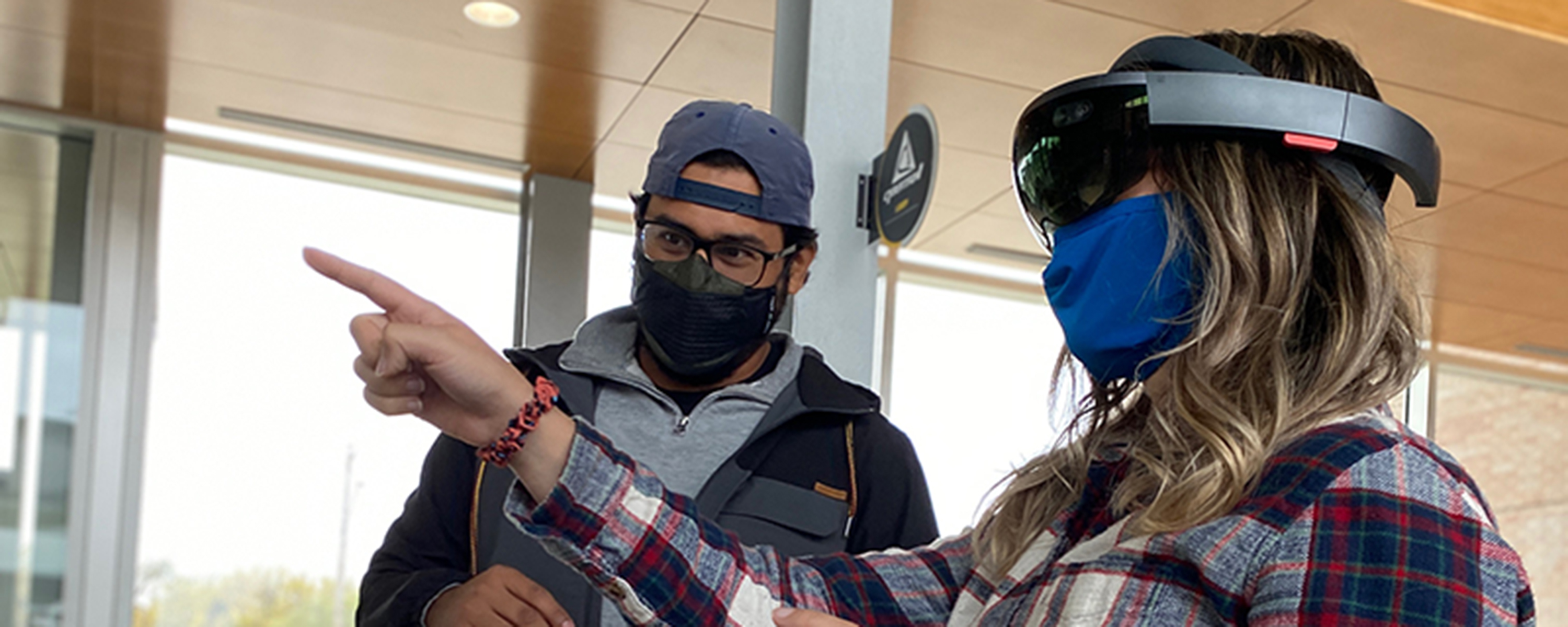Eight Wichita State students recently worked together to create and submit a proposal to the NASA SUITS (Spacesuit User Interface Technologies for Students) Design Challenge.
The SUITS challenge is an opportunity for students to participate in NASA’s Artemis mission of “landing the first woman and the next man on the moon, specifically at the lunar south pole, region by 2024.”
Arnold “AK” Kim, the project’s student lead, says the NASA SUITS challenge is part of the NASA initiative to get college students involved in helping with designs and experiential learning.
The team’s initial task for phase one of the challenge was to design a heads-up information display within augmented reality settings.
Kim explains that within an augmented reality setting, the heads-up display will be in the astronaut’s helmet. The astronaut will be able to view the information and beyond it into reality. The digital elements will essentially be semitransparent. It will be able to play video tutorials for the astronauts to instruct them on certain procedures and it will have mapping functions. The display will also be able to give directions. Lastly, it will show critical vitals, so astronauts know where their vital levels are at.
If their proposal is approved, they will move to phase two, which includes building the design they proposed.
The team of eight is comprised of a diverse group of students with engineering, business or graphic design backgrounds. The challenge’s tasks were divided according to the team members’ strengths.
Kim is a business major who is also pursuing a dual credit in the Master of Innovation Design program. Kim’s role on the team included the initial background research and ongoing management of the team-member duties.
Kim says this is the first year Wichita State has participated in the challenge, and the team was pulled together somewhat unexpectedly.
“We put it all together in four weeks,” Kim said. “The team probably put in 40 hours a week, and it was pretty much a full-time thing for the last few weeks.”
Kim says the toughest part of the challenge was that it was the first time Wichita State has had a team submit a proposal to the challenge, so it was difficult to know what to expect.
“Our first proposal did not come out great, and our advisers helped us improve it,” Kim said. “It was a learning opportunity for us because we were able to learn from what we did wrong and make it better. By the deadline, our proposal was pretty strong.”
mechanical engineering major
Kevin Morales is a fourth year in the human factors Ph.D. program at Wichita State. His role on the team was to design the navigation features in the augmented reality display.
Morales says there are three criteria in the challenge that the team was supposed to meet. The display looks into navigation and how the astronaut can get from one place to another. The next thing is excavation: how to use the tools they are given; and the third one is the extra-vehicular activities, which will show the astronaut their vitals.
Morales’ expertise in human factors provided vital support and leadership on the team because he has extensive experience with augmented reality and user interfaces.
“I’ve definitely learned about facilitation from being part of the team. I’m very laid back, and I’m the person who sits at the back of the classroom. But doing this challenge empowered me to stand up and say, ‘Hey, this is what we need to do.’”
Jennifer Alfaro, a mechanical engineering major at Wichita State, was one of three undergraduate students on the team. For the challenge proposal, Alfaro was part of the Outreach Team and Science Sampling Team.
“The outreach section of this project is imperative, as this is the first year Wichita State has participated in the challenge. We need to not only share our experiences, but also recruit potential talent for future projects like this,” Alfaro said.
Maggie Schoonover, faculty adviser for the team, says that advising the team has been rewarding and fun to watch. The team is comprised of undergraduates and graduate students, but Schoonover says that they were able to work together cohesively to create an innovative working environment.
The team’s design, System Engineered for Lunar Environment Navigation and Exploration (SELENE), was reviewed on Nov. 17 to determine if the team’s design would move on to phase two of the challenge. Their proposal was selected and they are now building their design for phase two. The third and final phase of the challenge is for their creation to be tested and judged by NASA at the Johnson Space Center in Houston, Texas, in April 2021.


 Courtesy
Courtesy